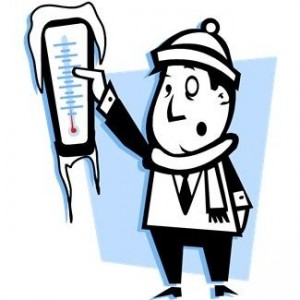Have you ever noticed that whenever the temperature starts to drop and you begin to feel chilly you also have the sudden urge to pee? You not only have the urge to pee, but you need to do so more often? As weird as that sounds, it’s a real thing. It’s a bizarre phenomenon called cold diuresis.
As you all know, your body is made up of 75% water, meaning you are basically one big sack of walking liquids. And what do liquids do when they get too cold? They freeze! Therefore, cold diuresis is your body’s way of getting rid of excess liquids and protecting vital organs from getting too chilly. There are two main reasons this happens: a process called vasoconstriction and because of proteins called aquaporins.
When you get cold, blood vessels in your body, especially in your fingers, toes and other extremities, begin to constrict in an attempt to maintain a warm core temperature. That is vasoconstriction. Because your body constricts blood flow to your extremities, there is more blood left to hang out in the rest of your body. You have the same amount of blood as before, just not as much space to contain it all. This leads to high blood pressure, causing your kidneys to pull liquid out of the body. With more liquid leaving the body, naturally there would be more trips to the bathroom.
Now there are also proteins called aquaporins that form channels between the inside and outside of your cells that allow water to travel more quickly. When it gets cold outside, the aquaporins are hindered in parts of your body including the brain and kidneys. Since water can’t flow into those cells, it chills out in the bloodstream. Before you know it, there is too much extra water in your bloodstream and that is when you start looking for the nearest bathroom.
There haven’t been too many experiments done to show the results of cold diuresis on the human body. However, many of the studies done have been observational. For example, in the 1920’s a series of immersion studies were held in which men were asked to be immersed in a tub full of hot water and then a tub of cold water. It was observed that the urine output of the men when immersed in cold water was much higher than that when they were in the hot water. These studies along with many others concluded that the cold temperatures increased blood pressure, which then leads to cold diuresis. Although these studies were fairly simple and didn’t include any women, I believe from experience that cold diuresis is a human condition that affects both males and females.
From what I have learned, there is definitely a correlation between cold temperatures and the amount a person needs to urinate, and this would be considered a direct causality. When the temperature drops, your body reacts to regulate body temperature, which causes the release of excess liquids. As a result, you pee more! I guess it’s a good thing there are so many bathrooms here at Penn State huh? Now if you were to say this phenomenon works as a reverse causality also, I would have my doubts. As far as I know the amount of times a person needs to use the restroom does not somehow directly make temperatures drop. With that said though, researching this topic has made me curious as to if human waste does somehow effect our climate. Its no secret that it can effect the environment we live in, but does that in turn effect the weather?
Resources:
http://www.globalbioweather.com/weather_cold_diuresis.html
http://motherboard.vice.com/blog/why-cold-weather-makes-you-pee
Bader, Richard A., Johan W. Eliot, and David E. Bass. “Hormonal and Renal Mechanisms of Cold Diuresis”. Vol. 4. Lawrence, MA: Quartermaster Climatic Research Laboratory, 1950. Print.

